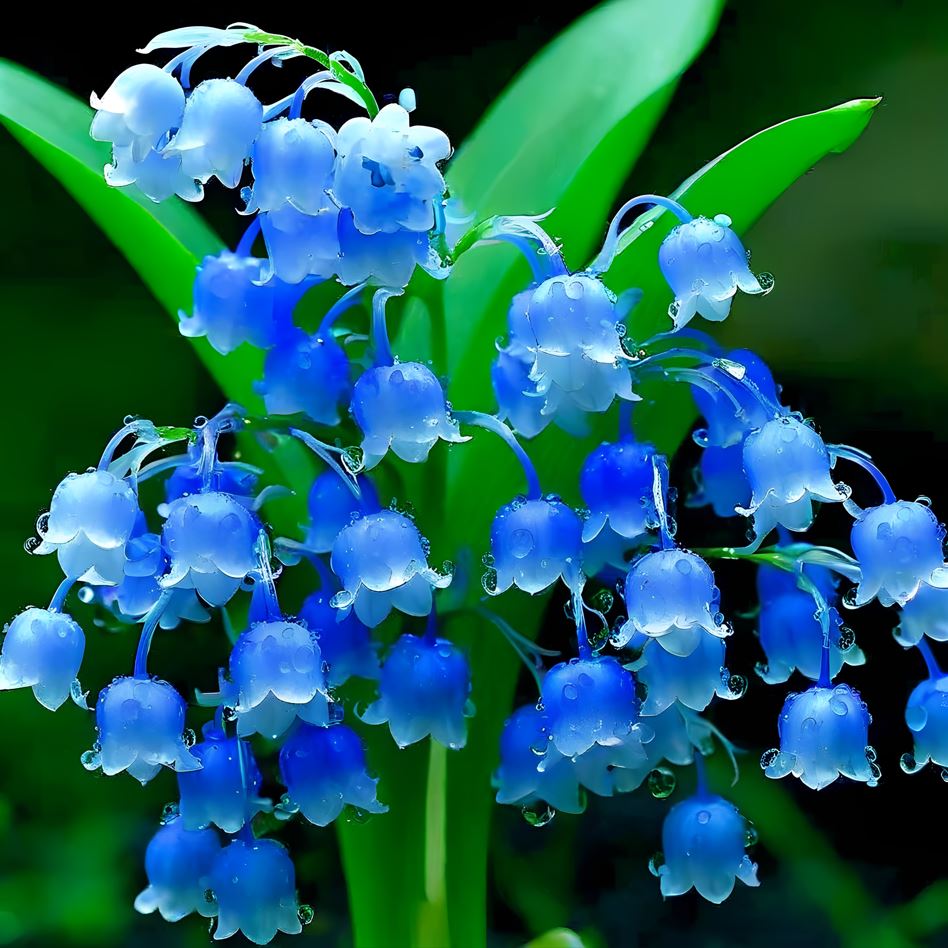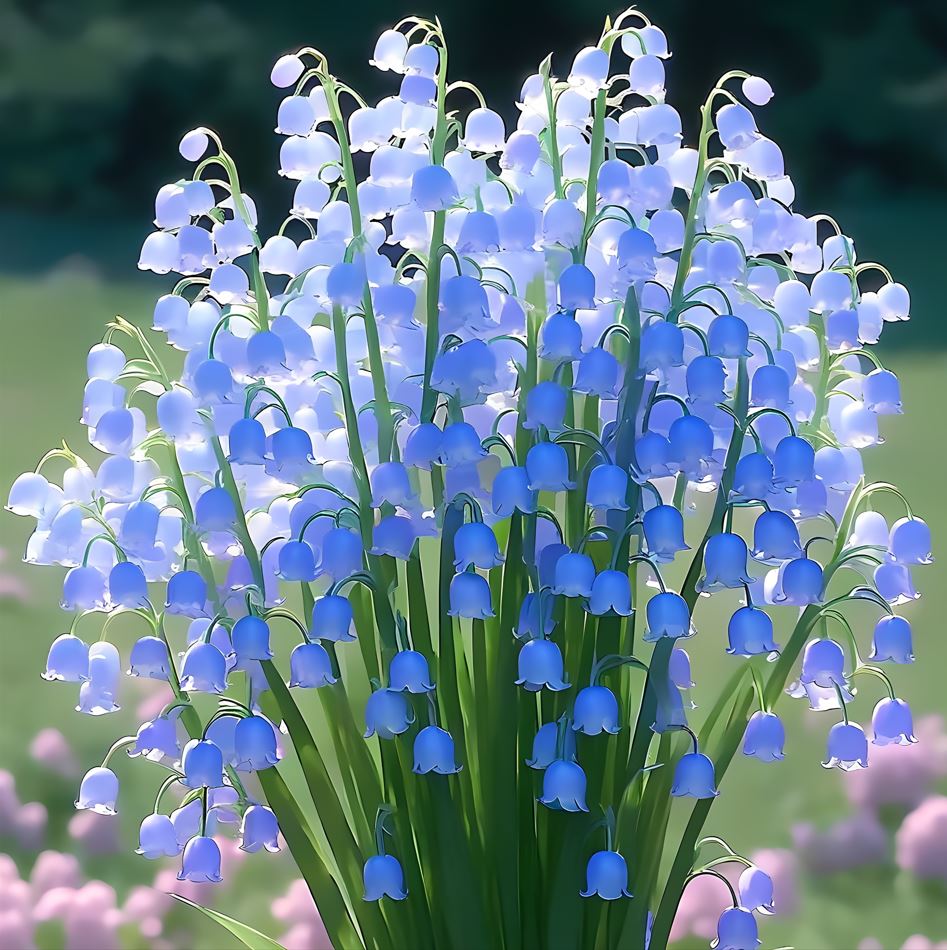Lily of the valley, scientifically known as Convallaria majalis, is more than just a visually enchanting flower; it’s a tapestry woven with rich symbolism, toxic secrets, and ecological importance. With its delicate white bell-shaped flowers and a fragrant aroma that captivates many, this perennial plant invites us to explore its complexities—drawing connections between nature’s beauty and its powerful, often dangerous allure.

The Allure of Its Aesthetics
Visual Appeal
One cannot overlook the intrinsic beauty of lily of the valley. Its appearance evokes sentiments of purity and serenity, making it a popular choice for gardens and a recurring motif in various cultural contexts, particularly in weddings where it signifies happiness and luck. This juxtaposition emphasizes an important notion: beauty can exist alongside danger. While lily of the valley enchants passersby, it harbors potent toxins that can lead to serious health risks if ingested, causing symptoms like nausea or arrhythmia. Moreover, this duality might remind us of life itself—a landscape filled with both alluring moments and perilous challenges. The radiant charm of its blossoms can be seen as analogous to fleeting happiness, which often accompanies potential pitfalls. For instance, envision a garden blooming with lily of the valley, drawing children’s laughter as they play nearby, unaware of the hidden dangers lurking within those innocent-looking flowers. Such imagery encapsulates our perpetual dance with risk amidst delight.
Fragrance and Sensory Experience
The captivating fragrance of lily of the valley is another alluring aspect of this flower. Its sweet, delicate scent carries the power to evoke nostalgia and transport individuals to cherished memories. The interplay between the visual elegance and the enchanting aroma creates a sensory experience that can be both delightful and disarming. This combination of sensory cues can have a profound impact on our emotions and perceptions, reminding us that beauty often encompasses more than meets the eye. Just as the flower’s toxicity lies beneath its surface, the depth of our own experiences can be obscured by superficial impressions. As we immerse ourselves in the captivating presence of lily of the valley, we are invited to pause and reflect on the complex tapestry of life, where the alluring and the perilous coexist in a delicate balance.
Symbolism in Different Cultures
Significance in Weddings
In many cultures, the lily of the valley holds a special significance, particularly in the context of weddings. The flower’s association with purity, happiness, and luck has made it a popular choice for bridal bouquets, decorations, and even wedding attire. This symbolism speaks to the flower’s ability to evoke feelings of joy, new beginnings, and the promise of a harmonious union. However, the underlying toxicity of the lily of the valley serves as a reminder that even in the midst of celebration, we must remain vigilant and aware of the potential risks that may lurk beneath the surface. This duality encourages us to approach life’s milestones with a balanced perspective, acknowledging both the enchanting moments and the hidden challenges that may arise.

Representations of Purity and Luck
Beyond its role in weddings, the lily of the valley has been imbued with deeper symbolic meaning in various cultural traditions. In some contexts, the flower is seen as a representation of purity, innocence, and the renewal of life. Its delicate, bell-shaped blooms evoke a sense of fragility and vulnerability, yet they also convey a resilience that has captured the imaginations of artists, poets, and storytellers throughout history. This contrast between the flower’s apparent frailty and its ability to thrive in shaded environments speaks to the multifaceted nature of human experiences, where strength and vulnerability coexist in a complex tapestry. Similarly, the association of the lily of the valley with luck and good fortune suggests a belief in the hidden potentials that often lie beneath the surface, reminding us to approach life with a sense of wonder and openness to the unexpected.
Toxicity and Health Risks
Identifying the Toxins
While the lily of the valley captivates us with its beauty, it also harbors a dark secret—the presence of potent toxins that can pose serious health risks if ingested. The plant contains cardiac glycosides, such as convallatoxin and convalloside, which can disrupt the normal functioning of the heart and lead to potentially fatal consequences. These toxins are found in all parts of the plant, from the delicate flowers to the underground rhizomes, making it a dangerous substance to handle or consume, especially for young children and pets.
Symptoms of Poisoning
Ingesting any part of the lily of the valley can result in a range of unpleasant and potentially life-threatening symptoms. These may include nausea, vomiting, diarrhea, irregular heartbeat, and even seizures or coma in severe cases. The toxins can also cause gastrointestinal distress, neurological effects, and respiratory difficulties, highlighting the importance of keeping this plant away from vulnerable individuals and ensuring its safe cultivation and disposal. This knowledge serves as a sobering reminder that the alluring beauty of nature can often conceal hidden dangers, challenging us to approach the world with a heightened sense of awareness and caution.
Ecological Importance of Lily of the Valley
Habitat for Wildlife
From an ecological perspective, the lily of the valley plays a significant role in forest ecosystems. As a ground cover, it thrives in shaded areas, providing habitat for various organisms while preventing soil erosion. This characteristic not only benefits the plant itself but also contributes to the overall biodiversity of the environment. By creating a diverse and balanced ecosystem, the lily of the valley supports the survival and thriving of a wide range of species, from insects and small mammals to birds and other vegetation. Its presence serves as a testament to the interconnectedness of natural systems and the importance of preserving the delicate balance that exists within them.

Role in Preventing Soil Erosion
In addition to providing habitat for wildlife, the lily of the valley’s growth habits also contribute to the stability and health of the soil. The plant’s rhizomes, or underground stems, spread and intertwine, forming a dense network that helps to hold the soil in place and prevent erosion. This resilience is particularly valuable in forested areas, where the lily of the valley’s ability to thrive in shaded conditions allows it to flourish and fulfill its role as a protective ground cover. By anchoring the soil and promoting the growth of other plants, this unassuming flower plays a vital part in maintaining the ecological balance of its native habitats.
Adaptation and Resilience
Growth Habits and Rhizomes
The lily of the valley’s adaptability and resilience are evident in its growth habits and physical characteristics. Growing to a height of only 10 inches, these plants feature rhizomes that spread underneath the surface, reinforcing their presence as a resilient species native to Eurasia. This characteristic may inspire admiration, as it reflects nature’s ability to adapt and assert dominance even in less favorable conditions, much like grit and perseverance in human endeavors. The lily of the valley’s ability to thrive in shaded environments and its persistent underground growth demonstrate a remarkable level of adaptability, allowing it to flourish in a wide range of ecological niches.
Thriving in Shaded Areas
The lily of the valley’s preference for shaded areas is another testament to its resilience and adaptability. While many plants require ample sunlight to grow and thrive, this flower has evolved to capitalize on the unique conditions found in forested environments. By adapting to the lower light levels and competing successfully with other ground cover species, the lily of the valley has secured its place as a dominant presence in these ecosystems. This capacity to adapt and excel in challenging conditions serves as an inspiration, reminding us of the power of determination and the ability to overcome adversity, even in the face of seemingly insurmountable obstacles.

Lily of the Valley in Gardens
Aesthetic Contributions
In addition to its ecological significance, the lily of the valley also plays an important role in garden design and aesthetics. Its delicate, bell-shaped flowers and lush, green foliage can add a touch of grace and elegance to any outdoor space. Gardeners and landscape designers often incorporate the lily of the valley into their plans, taking advantage of its ability to thrive in shaded areas and create a sense of tranquility and serenity. The flower’s visual appeal, combined with its association with purity and renewal, makes it a highly sought-after addition to many gardens and landscaping projects.
Promoting Biodiversity
Beyond its aesthetic contributions, the lily of the valley also serves an important role in promoting biodiversity within garden ecosystems. By encouraging the growth of this perennial plant, gardeners can create habitats and food sources for a variety of pollinators, insects, and small animals. This, in turn, can lead to a more balanced and thriving ecosystem, where the presence of the lily of the valley supports the overall health and resilience of the wider garden community. By embracing the cultivation of this enigmatic flower, gardeners can actively contribute to the preservation of biodiversity and the maintenance of a harmonious, interconnected natural environment.
Historical Context and Folklore
Cultural References in Literature
Throughout history, the lily of the valley has captured the imagination of writers, poets, and artists, who have woven its symbolism and imagery into their creative works. In literature, the flower has been associated with themes of renewal, purity, and the bittersweet nature of life. Writers have often used the lily of the valley as a metaphor to explore the duality of beauty and danger, the fleeting nature of happiness, and the hidden complexities that lie beneath the surface of human experience. From the delicate flower’s appearance in Shakespeare’s plays to its recurring motifs in Romantic poetry, the lily of the valley has become a rich source of inspiration and a powerful symbol that transcends the boundaries of time and culture.
Myths Surrounding the Flower
In addition to its literary references, the lily of the valley has also been the subject of various folk tales and mythological narratives. In some traditions, the flower is believed to have sprung from the tears of the Virgin Mary, further reinforcing its association with purity and divine grace. Other legends recount the flower’s creation as a result of the laughter of fairies or the playful antics of forest spirits. These mythical stories often serve as cautionary tales, warning against the allure of the lily of the valley’s beauty and the potential dangers that lie within. Such narratives remind us of the importance of vigilance and the need to look beyond surface appearances, echoing the deeper lessons that the flower’s duality has to offer.

Life Lessons from Lily of the Valley
The Duality of Beauty and Danger
The lily of the valley’s captivating beauty and its underlying toxicity serve as a powerful metaphor for the complexities of life itself. This duality emphasizes the importance of understanding that even the most alluring and seemingly innocent aspects of our world can harbor hidden dangers. Just as the lily of the valley’s delicate flowers and fragrant aroma mask the presence of potent toxins, the surface of reality often obscures the deeper challenges and risks that we must navigate. This lesson encourages us to approach life with a keen sense of observation, recognizing that beauty and danger can coexist in intricate, sometimes unexpected ways.
Observations on Superficial Appearances
The lily of the valley’s story also invites us to reflect on the importance of looking beyond superficial appearances and preconceptions. Its enchanting visage can easily captivate the senses, leading us to overlook the inherent risks associated with the flower. This dynamic serves as a reminder that life is often more nuanced than it first appears, and that making hasty judgments based solely on external factors can lead to harmful consequences. By taking the time to understand the multifaceted nature of the lily of the valley, we can apply these lessons to our own lives, recognizing that true wisdom often requires a willingness to delve deeper and challenge our assumptions.
Conclusion
The lily of the valley, with its delicate beauty, toxic secrets, and ecological significance, serves as a microcosm of the intricate tapestry of life. Through this enigmatic flower, we are invited to explore themes of duality, resilience, and the importance of holistic understanding. Its alluring aesthetics, cultural symbolism, and environmental role all contribute to a rich and thought-provoking narrative that encourages us to approach the world with a more nuanced and attentive perspective. Whether encountering the lily of the valley in our gardens, literature, or the natural environment, we are presented with the opportunity to reflect on the complexities of human existence, the power of observation, and the profound lessons that can be gleaned from the natural world. By embracing the lily of the valley’s multifaceted story, we can gain a deeper appreciation for the beauty and challenges that coexist in the world around us, and perhaps even uncover insights that can guide us through our own journeys.



